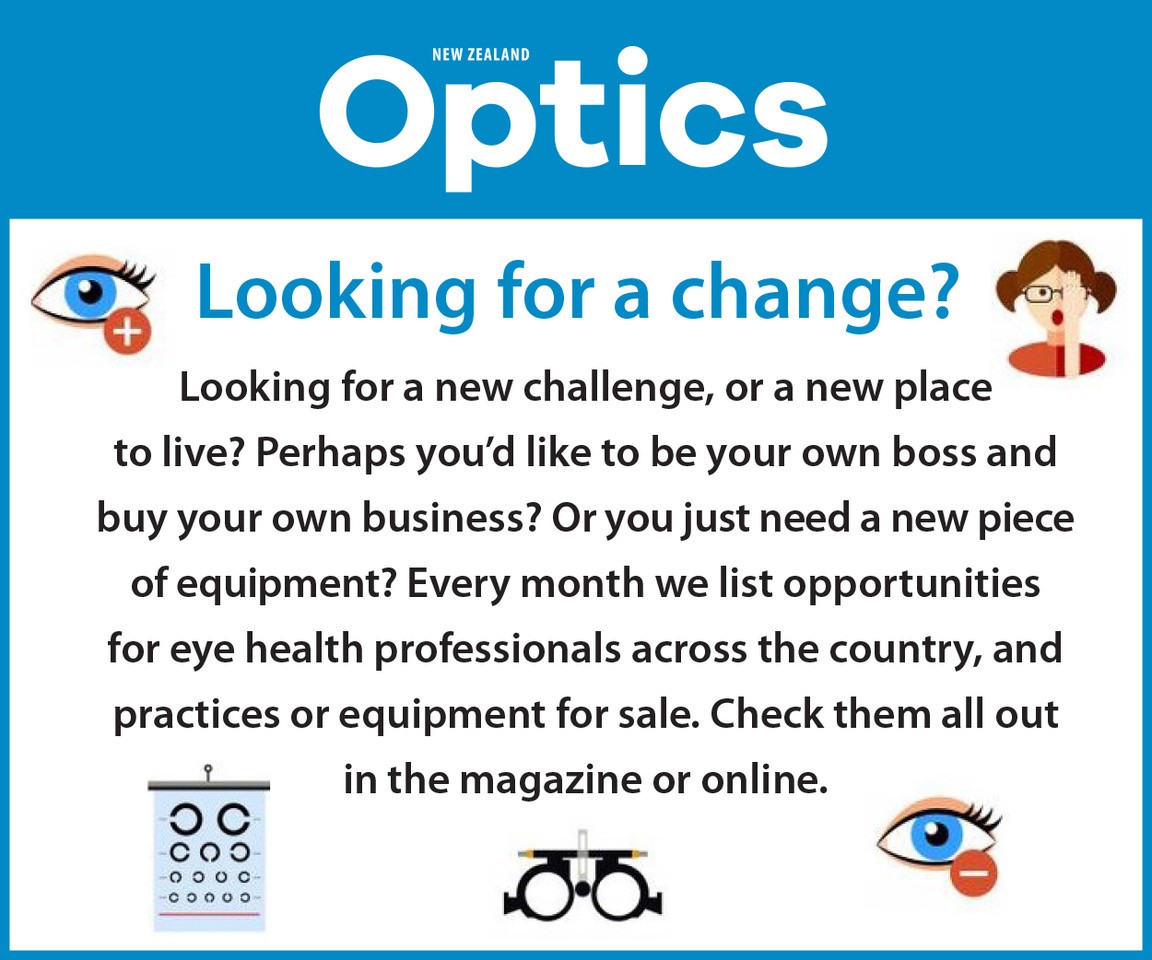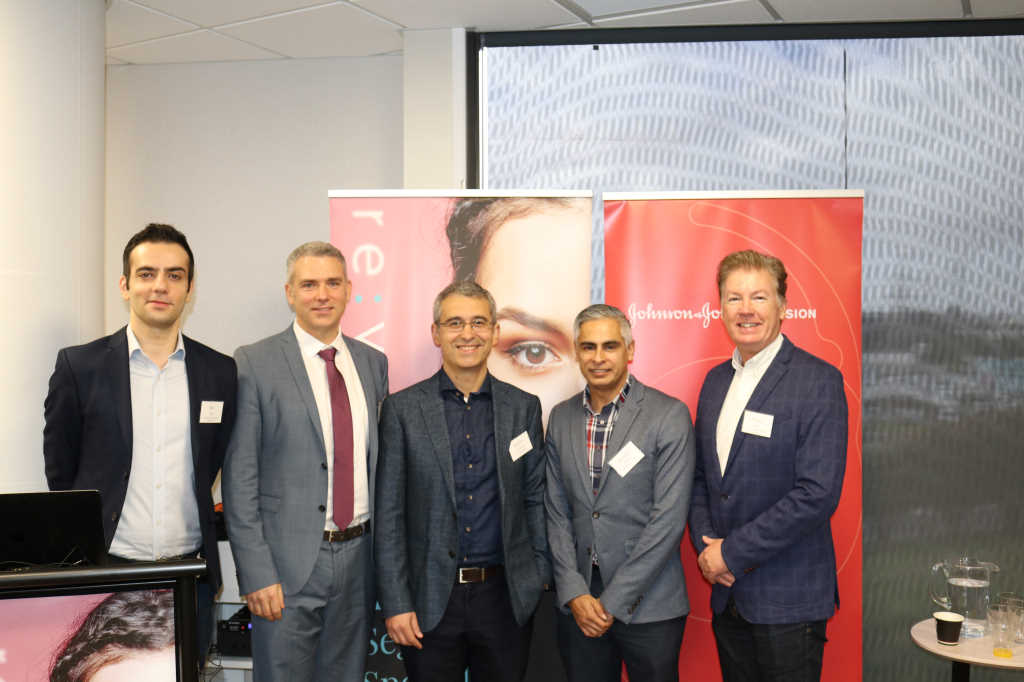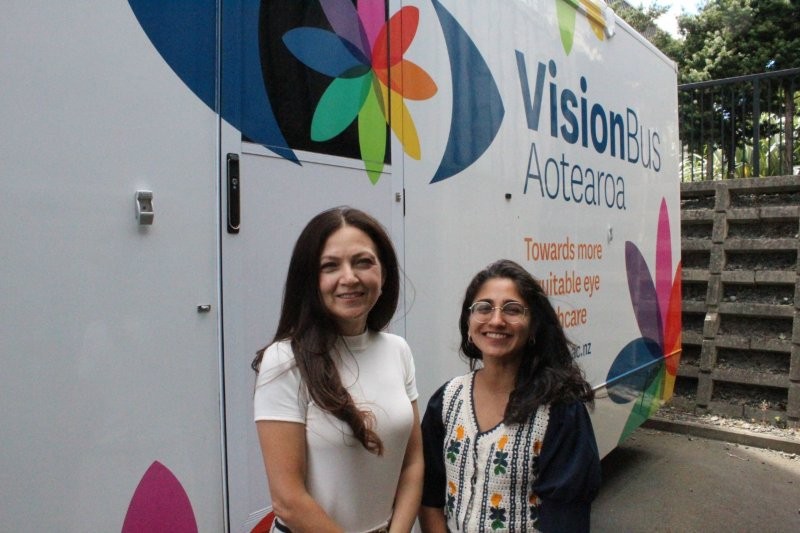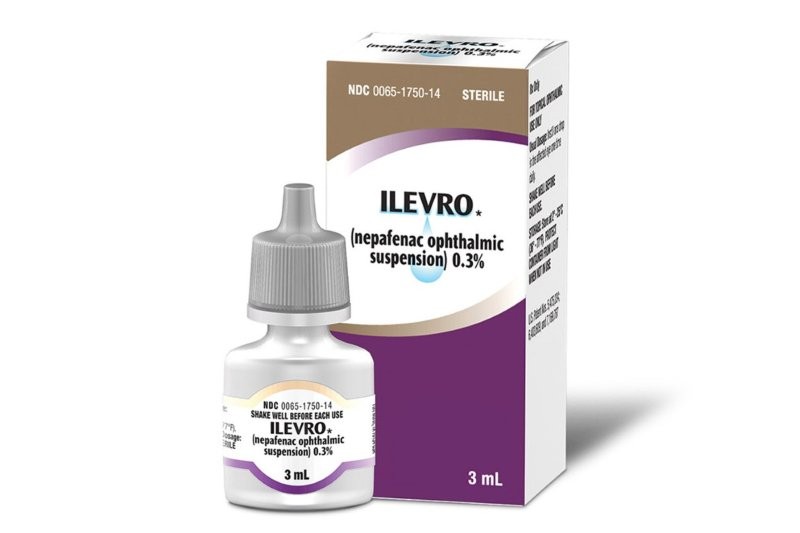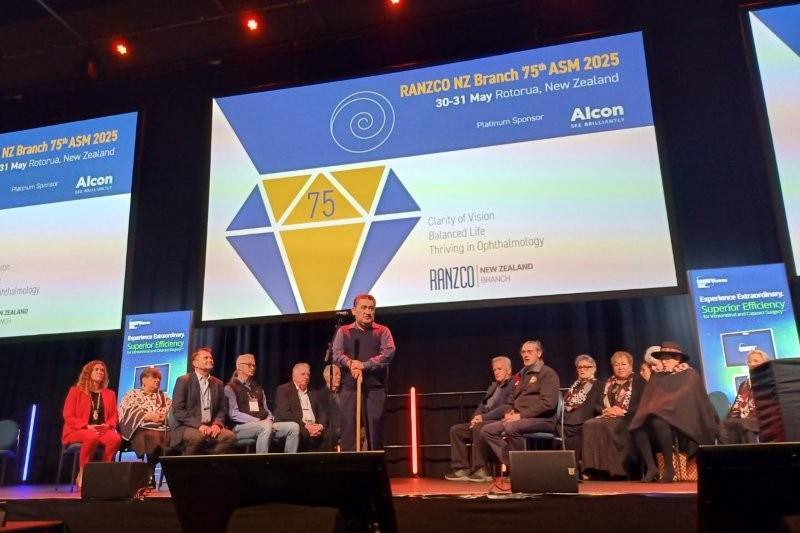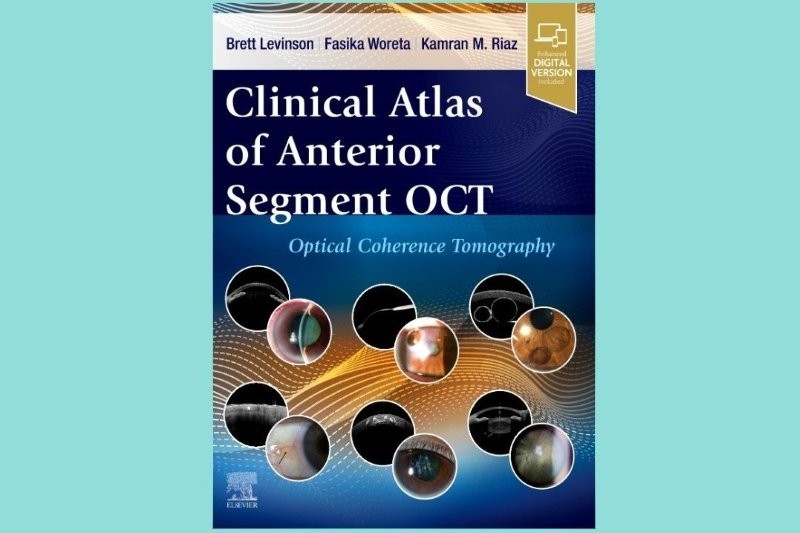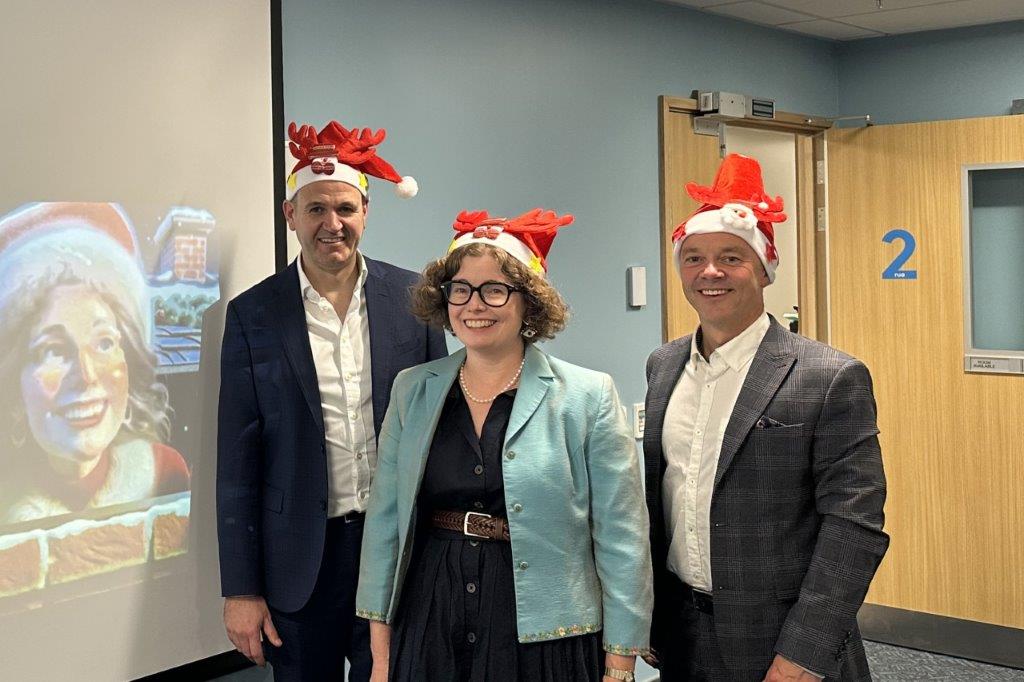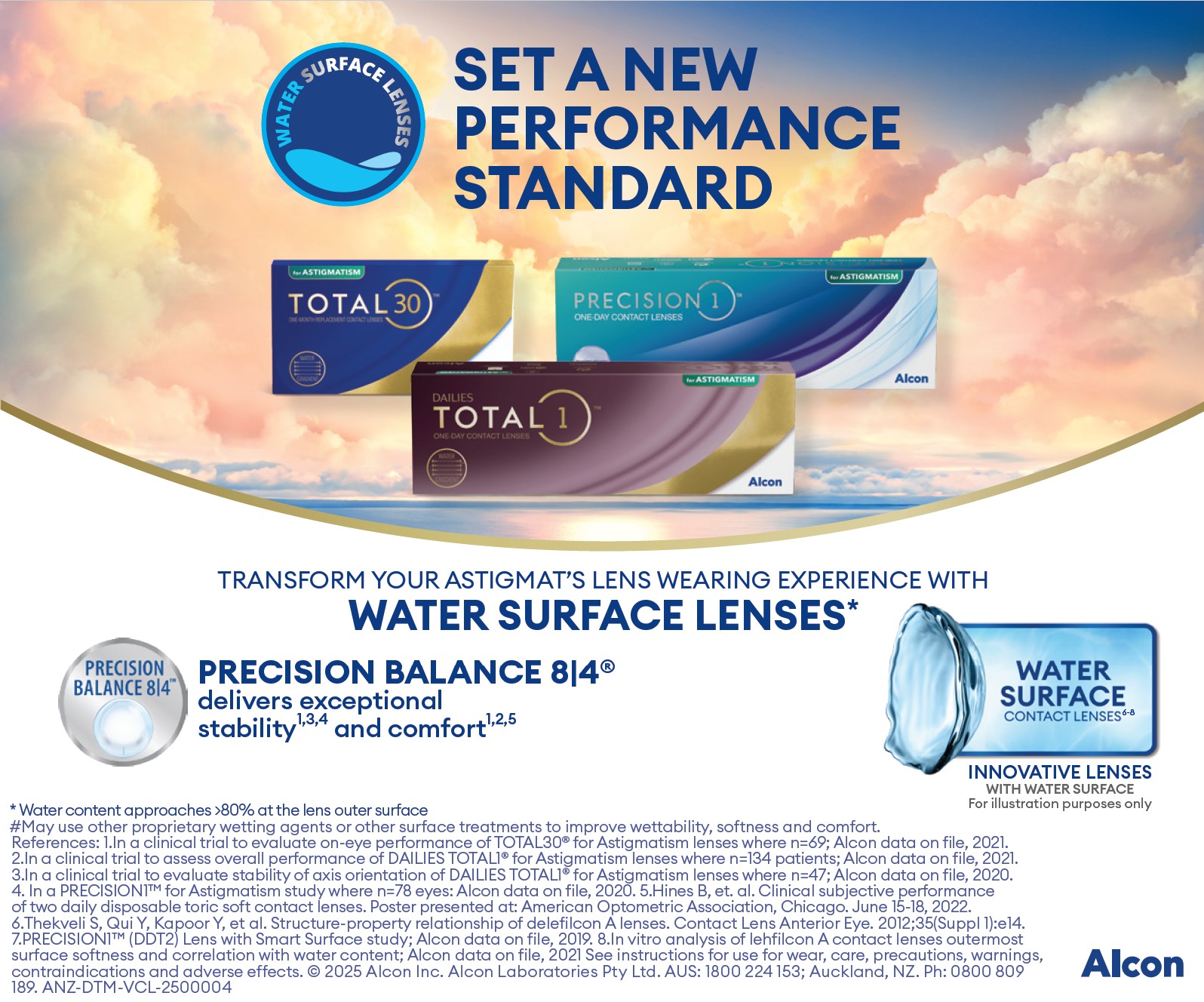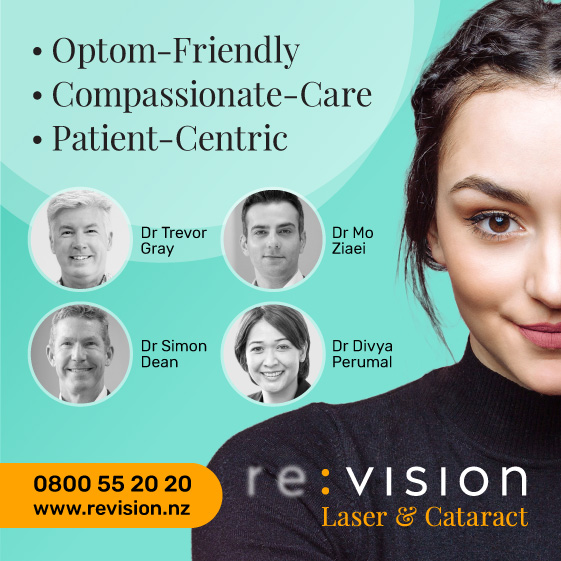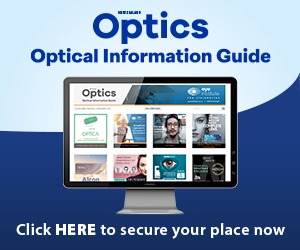Inspiring co-management with Re:Vision
Re:Vision held its first ever co-management optometry conference at its purpose-built clinic in Mount Wellington, Auckland. Morning breakfast bites were served with a healthy side of conversation and lots of coffee, dispensed in Re:Vision reusable coffee cups.
Re:Vision surgeon and founder Dr Trevor Gray gave an inspiring introduction discussing the benefits of working with optometrists for the good of the patient and the profession. He also introduced new visiting vitreoretinal consultant Dr Clairton de Souza, who joins Drs Monika Pradhan (medical retina) and Hussein Patel (glaucoma), in providing more specialities to the Re:Vision team.
Dr Gray also thanked optometrists for referring needy cataract patients to ARCH (the Auckland Regional Charity Hospital). Over the past five months, 21 patients have received free cataract surgery at Re:Vision as part of the ARCH initiative, which is attracting an ever-increasing number of generous ophthalmologists, he said.
Glaucoma co-management and cases
Dr Patel began, by discussing glaucoma co-management and outlining the District Health Board’s (DHB’s) and the Royal Australian and New Zealand College of Ophthalmology’s (RANZCO’s) referral guidelines. There are many benefits of co-management to the patient, he said, including better care continuity, more convenience and options, and reduced pressure on the public system. Benefits to optometrists include up-skilling, improving relationships with patients and ophthalmologists and increasing their business. Patients suitable for co-management include glaucoma suspects, stable moderate primary open angle glaucoma and narrow angle glaucoma patients.
Dr Patel’s second talk took a case-based approach looking at glaucoma masquerades. Conditions such as megalopapilla, optic nerve drusen and disc pits can appear like glaucoma, however we should consider age and ethnicity - glaucoma is less likely for those under 50 and in Māori and Pasifika patients. While optic never cupping can occur in any type of optic neuropathy although it’s more common in glaucoma.
VMT, diabetic complications and hyperopic drift
Dr Monika Pradhan gave a practical talk on how to identify and manage vitreomacular traction (VMT). “Sometimes you may just see a dull foveal reflex and so you need an OCT to diagnose.” It’s important to differentiate between adhesion and traction, she said. VMT patients need to be given an Amsler grid and monitored every three to four months.
Pradhan also discussed co-management and OCT analysis in diabetic patients, touching on retinal complications, such as macular oedema, epiretinal membrane, ischaemia, neovascularisation, tractional retinal detachment and cystoid macula oedema. The take home message was to refer diabetics with problems immediately, as early detection is key. Involve a diabetic specialist, as well as the patient’s GP, to help manage vascular risk factors, such as blood pressure and cholesterol.
Cataract complications and 20/happy patients
Dr Gray addressed a common problem typically arising one to three years after routine cataract surgery. Hyperopic drift is caused by fibrosis and contraction of the anterior capsule, causing posterior migration of the intraocular lens (IOL). This hyperopic shift in refraction can be up to +2D. These days, we are seeing less Elschnig’s pearls and more often a diffuse thickening of the posterior capsule, which can affect vision and contrast sensitivity. Factors that impact the development of posterior capsular opacification (PCO) include capsulorhexis size, high myopia, retinitis pigmentosa, diabetes, pseudo-exfoliative syndrome, age and IOL material.
Dr Gray’s next talk on refractive enhancement following cataract surgery discussed getting patients “20/happy”. About 70% of patients have ocular surface issues and treating this pre-operatively will make biometry measurements more accurate and help patients tolerate post-operative eye drops. Options for enhancement include: glasses, contact lenses, sulcus and toric IOLs, IOL exchange, laser surgery and photoreactive keratectomy.
Continuing the co-management theme, his final talk discussed the expanding role of optometrists and the reducing role of ophthalmologists in managing meibomian gland dysfunction (MGD). Dr Gray outlined conditions that can masquerade as MGD and discussed treatment options, including the use of therapeutic agents such as methylprednisolone and azithromycin.
Cattrax: better referrals, better treatment
Dr James McKelvie updated us on Cattrax. A cloud-based software app designed to streamline patient flow between the optometrist and ophthalmologists in both the public and private systems. Cattrax is easy to navigate and simple to use and is already making a big difference to cataract patients in Hamilton. A cataract referral can be done in less than two minutes! Public referrals incorporate quality of life questionnaires and clinical priority assessment criteria (CPAC) scores, and instantly waitlists the patient for surgery at the correct DHB using GPS.
Dr McKelvie also walked us through the RANZCO guidelines for managing age-related macular degeneration (AMD) patients, highlighting that neovascular AMD patients must be treated within seven days. The guidelines are “very onerous and complicated with lots of scans and investigations required,” he said. But, by using the Cattrax system, the convoluted guidelines can be simplified.
The patient is seen by the optometrist, who gives a provisional diagnosis, and is then linked to support networks such as Macular Degeneration New Zealand. Then, at the appropriate time, a referral is made to the correct clinic. In the future, artificial intelligence may analyse the OCT scan and give an initial diagnosis and even an indication of the treatment plan. Dr McKelvie’s also discussed RANZCO’s guidelines for glaucoma co-management and using Cattrax to form management plans within your competencies to maximise patient outcomes.
Refractive surprise, transplant problems and keratoconics
Re:Vision’s other in-house surgeon, Dr Mo Ziaei, focused on post-operative refractive surprise, corneal transplantation problems and when to refer kerataconics.
About 85% of surgeries will refract within 1D of target refraction and 55% within 0.50 DS. If there’s a refractive surprise, a formal refraction should be performed, as well as dilating and checking for corneal oedema and IOL position.
The most feared corneal transplant complication, graft rejection, meanwhile may present with injection, oedema, keratic precipitates, Descemet’s membrane folds, anterior chamber cells, new vessels and a Khodadoust line. Dr Ziaei urged optometrists to start treating suspected graft rejections immediately (with hourly Predforte eyedrops) and then refer.
As to referring kerataconics, while there is no global consensus on keratoconus progression, he recommended monitoring progression using a topographer. Corneal cross-linking is the only treatment available which treats keratoconus pathophysiology. However, the future will include “cross-linking, rings and perhaps a bit of laser.”
VR haemorrhages
Dr De Souza gave a fascinating presentation on vitro-retinal haemorrhages, outlining a variety of causes both vascular (ischaemic and non-ischaemic) and mechanical. He included some great visuals and surgical videos and several interesting cases, including one about a 22-year-old student with valsalva retinopathy who received YAG laser hyaloidotomy, allowing blood into the vitreous for quicker reabsorption, improving vision from count fingers to 6/7.5.
Dr De Souza’s other talks looked at rhegmatogenous retinal detachment (a new review of an old problem) and vitreomacular adhesion.
The day was completed with nibbles, social drinks and more conversation with many saying the day had been very applicable to their day-to-day practice. Re:Vision is holding a second co-management conference on 3 November for those who were unable to attend this one.
Ella Ewens is a therapeutically-qualified optometrist based at Greenlane Clinical Centre, specialising in CLs, therapeutics and glaucoma.









